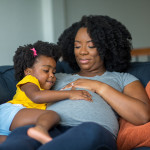When the Food and Drug Administration (FDA) first approved the Female Health Company’s female condom in 1993, it was mostly regarded as a dud, with potential users writing it off as inconvenient, cumbersome and noisy. Yes, noisy.
Nevertheless, it gave women a new way to protect themselves from sexually transmitted infections and unwanted pregnancy. Plus, it was made of polyurethane, which made it an ideal alternative for men and women who have latex allergies and find male condoms uncomfortable.
In 2009, the FDA approved the second-generation female condom, the FC2, also manufactured by the Female Health Company. Sexual and reproductive health advocates lauded it as a far more comfortable (and quiet) but equally effective alternative form of contraceptive.
Like its male counterpart, the FC2 is an open-ended tube, but the key difference is that it has two rings—one on each end. Before sex, the receptive partner inserts the FC2’s smaller ring into the vagina or anus so that the outer ring protrudes. The inner ring can be removed for anal sex, whether the receptive partners are women or men who have sex with men (MSM).
“The female condom, as a name, is a misnomer,” says Jessica Terlikowski, policy manager at the AIDS Foundation of Chicago (AFC), one of many organizations in the Chicago region that pushed for FDA approval of the FC2 last year. “This isn’t something that’s meant just for women or meant just for vaginal sex. This is something that’s been used for anal sex, by gay men, for years and years.”
The idea that the female condom is a viable sexual health option for MSM is one of the primary messages of AFC’s Chicago Female Condom initiative. Inspired by Beyoncé’s Grammy-winning hit song “Single Ladies (Put a Ring on It),” the campaign urges Chicagoans to, well, put a ring on it through Facebook, Twitter and its website, ringonit.org.
“Using this little nugget of pop culture makes this campaign something that’s catchy and something people are going to take notice of,” Terlikowski says. “It enables us to talk about female condoms in a way that they haven’t been talked about before.”
But that talk isn’t limited to the Windy City. In March, Washington, DC—thanks to a $500,000 grant from the M·A·C AIDS Fund—became the first U.S. city to widely distribute free female condoms, handing out FC2s in beauty salons, convenience stores and high schools in neighborhoods with high HIV infection rates. Meanwhile, New York City’s Department of Health and Mental Hygiene—a longtime supporter of female condoms—has made FC2s available in health care settings since November.
“Whenever female condoms are being provided and there is education that accompanies distribution, women and men use them,” Terlikowski says. “This is something that we have right here, right now, that we can put into the hands of women and men and say ‘This is a way for you to take control of your own health.’” And that’s a message with a powerful ring to it.
Ring Leaders
City officials, AIDS organizations and gay men are embracing the female condom. Are you?






Comments
Comments